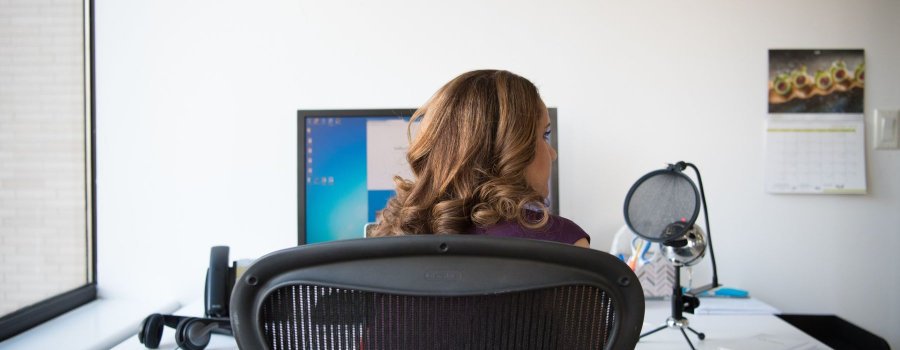
What happens to your body when you sit all day?
You may not believe this, but sitting too much may cause some serious problems for your health.
Typical office workers sit for more than eight hours a day in their workstations, and research shows that this type of sedentary lifestyle is linked to heart disease, obesity, some types of cancer, obesity, chronic back pain, and even a shorter life span.
These symptoms are what some refer to as “sitting disease.” The long-term effects of excessive sitting are hard to counteract– not even dieting and exercise can do the trick!
According to recent studies, the most effective way to prevent experiencing the “sitting disease” yourself is to stand while working. And no, we don’t mean standing for a full day straight.
Basically, alternating sitting and standing for at least four hours a day while working can have a positive impact on your mind and body.
But how to maintain work productivity while standing? This is where standing desks come in.
What is a Standing Desk?

A standing desk is a type of office or home furniture that allows the user to stand comfortably while working. There are already a lot of options available in the market, and they are referred to as sit-stand desks, stand-up desks, or height-adjustable desks.
Proper ergonomic standing desks can range from a few hundred dollars to thousands, depending on the brand and the features you want your standing desk to have.
However, owning a nice standing desk doesn’t mean you have to splurge money to get one. You can make one for yourself with just some of the items you already have at home.
Benefits of a Standing Desk
These are some of the benefits you can get from working at a standing desk:
1. Decreases the risk of obesity or excessive weight gain

Everyone knows that burning more calories than you take is one of the significant factors in weight loss. It’s also known that standing burns more calories than sitting, about 0.7 calories per minute.
Even if you stand for just 3 hours every day, that already equates to 750 calories burned in a week. If you would add it up for a full year, that’s like 8 lbs of burned-off fat, which is also equivalent to running 10 marathons with no required intensive training. How about that?
2. Increased Work Productivity

Transitioning to working on a standing desk could help you gain more work focus, thus increasing work productivity.
Statistics show those who use office chairs for a full day straight tend to get more tired easily, which means less work is done because they rest more than they work.
Many have also said standing desks boost their energy and help their mind to not wander off more while working, which means they’re mentally more alert than before.
3. Lowers the Risk of Contracting Type 2 Diabetes
If you have poor physical health, chances are your blood sugar levels are affected as well. Those with high blood sugar levels are more likely to be diabetic, and it has been studied that sitting more than standing increases the chances of this risk.
Compared to sitting after a meal, using a standing desk can significantly reduce your blood sugar levels.
There was a small study back in 2013 where 10 office workers were made to stand for 180 minutes after their lunch break.
The results showed that their blood sugar spike reduced by 43% compared to sitting for the same amount of time.
That is why sitting after eating is linked to contracting Type 2 diabetes. Using a standing desk after your break could negate that!
4. Promotes Positive Mood and Mental Health

Back in 2011, there was a “Take-a-Stand-Project” where a group comprised of 24 office workers was given a standing desk.
After a month, the participants reported that using a standing desk made them feel happier, less stressed, more comfortable, and felt more productive.
This proves that prolonged sedentary time or sitting can cause some serious damage to your mental health such as anxiety or depression.
That’s why it’s best to switch to a standing desk if you want your mood to improve!
5. Can Reduce Experiencing Chronic Back Pain

If there is one thing that office workers complain the most about, it’s back pain. Back pain is often linked to prolonged sitting, so it makes sense that standing more can greatly reduce this risk.
With the use of standing desks, you can work for a full day without experiencing the common problem of back pain.
It has also been proved with several studies that employees with long-term back pain noticed some improvements when they switched to standing desks.
When they switched back to sitting, the improvements were reversed almost immediately after a few days.
Cons of Using Standing Desks
Of course, there is no such thing as a 100% effective solution, so even though there are many benefits to using a standing desk, there are a few drawbacks as well. Here are some of them:
1. Increased Fatigue
Immediately switching to a standing desk can make you feel more tired at first. This is because your body isn’t used to it.
It may seem hard for the first few weeks, so it’s essential to listen to your body and take things as slow as possible.
Try alternating sitting and standing every 30 minutes. After a few days, you can increase your standing time bit by bit. That way, your body can adjust to the transition.
2. Varicose Veins
This may seem like a major drawback to some, as varicose veins are often linked to excessive standing.
That is why you should healthily balance sitting and standing. While sitting all day is bad, standing all day is no good as well.
3. Body Aches
Experiencing body aches such as in your calves and feet are common after standing for a long period of time.
You may experience this when using a standing desk at your first few tries, but that’s only because your body is only starting to adjust.
Notice that these aches will subside after a few weeks of transitioning. Just find your middle ground between sitting and standing and everything goes back to normal.
Working for a living doesn’t mean you have to sacrifice your physical and mental health.
Using a standing desk at work has a ton of benefits that will improve your lifestyle and overall work productivity, so we suggest that you take a stand and make the change.
Related Questions
How do you stand correctly?
It is important that you maintain proper posture all the time. Improper posture can lead to back pain and other musculoskeletal diseases.
To start, stand in front of your standing desk. Relax your shoulders and let your arms loose on your side.
Rest your elbows on the surface of your standing desk, making a 90-degree angle. Make sure that your wrist and neck are neutral.
How do you counteract sitting all day?
Sitting all day at work can have detrimental health effects. To counteract sitting all day at work, you can use a standing desk.
A standing desk allows you to work as usual but standing.
Using a standing desk at work allows you to move more while working compared to sitting all day while working.
